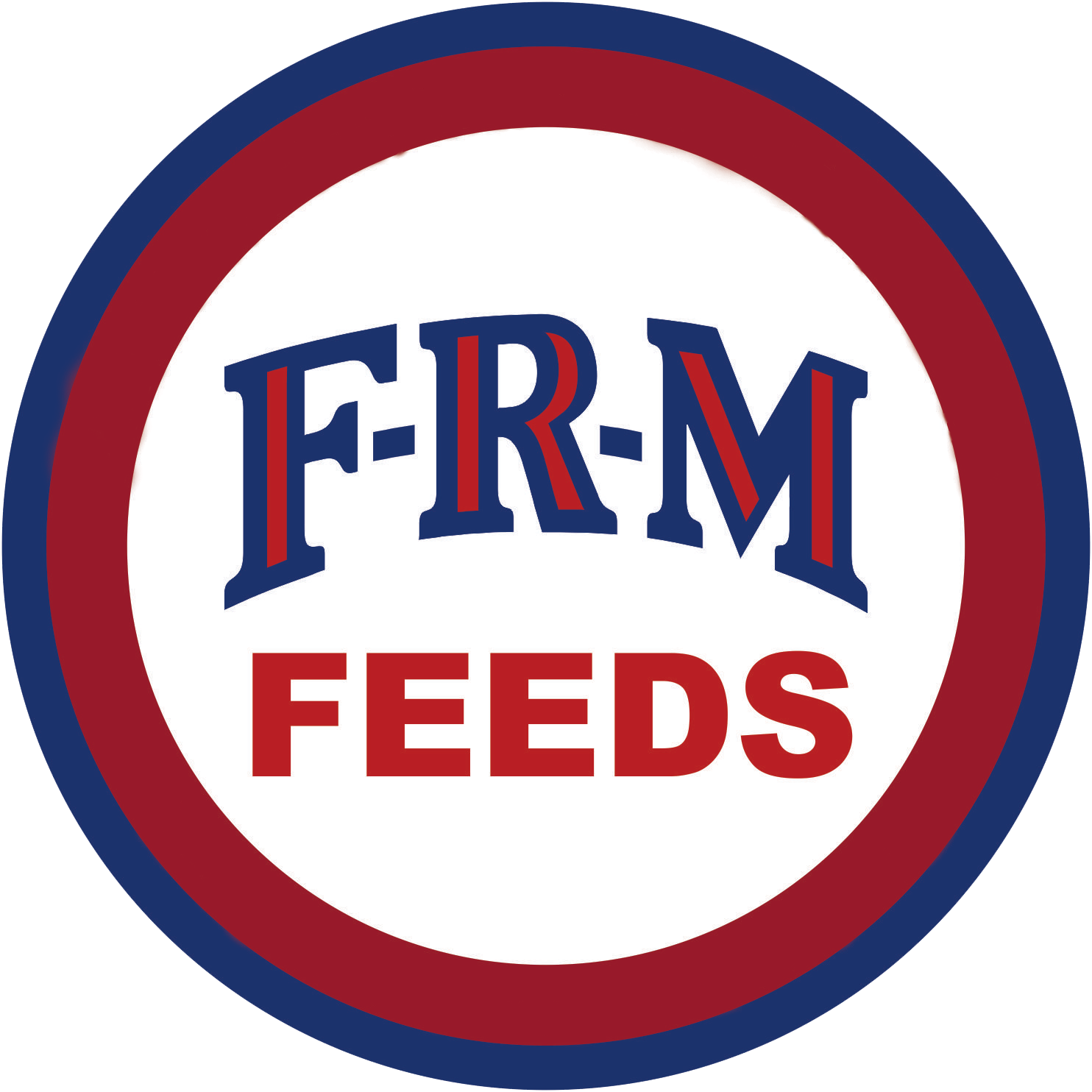Maximum profits from hog production requires a carefully planned and efficient feeding program.
Swine production is becoming more intensified and specialized. To meet this intensified stepped-up hog production, properly balanced high-quality rations must be fed. This means that nutritional needs of the pig for carbohydrates, fats, protein, minerals, and vitamins must be met fully for profitable and efficient production. No matter how careful one is in breeding, management, and disease control, a profit cannot be made unless the hogs are fed properly.
The use of antibiotics for faster growth and better feed efficiency is a recognized profitable practice, when fed properly. There have been hundreds of experiments conducted throughout the world proving this.
FRM Swine Feeds and Supplements are field tested, properly balanced formulas containing high quality ingredients fortified with all the necessary vitamins, minerals, and proven growth stimulants to speed up gains, increase feed efficiency and most important of all, increase feeding profits.
BREEDING STOCK SELECTION & MANAGEMENT
BOARS
The statement “The boar is half the herd” is very true. The boar is too often the most forgotten animal on the farm. Neglect to proper boar care can often result in a great loss of productivity and time. The following guidelines should be practiced to help prevent production and disease problems.
- GUIDELINES
Select quality boars – production tested if possible. - Purchase boars only from herds brucellosis free.
- Semen check all boars for viability, live sperm count, and number of abnormals.
- Isolate new boars for 30 days.
- Boars should be at least 8 months old before breeding.
- Test new boars on some market gilts before placing them in the breeding herd.
- Keep boars cool in summer and provide a dry comfortable place to sleep in winter.
- Don’t allow boars to be overworked. Young boars should be expected to breed 10 gilts or sows in a 3 to 4 week breeding season while older boars can service 12 to 15 sows.
- Never short yourself on boar power. The expense of a few extra boars may be your cheapest investment.
GILTS AND SOWS – Selection, Breeding, and Gestation
Your investment in your sow herd can pay off with interest, at farrowing time and right on to weaning weights. To put this in the proper perspective, consider that, at farrowing, baby pigs are really almost four months old. Which means, while you’re feeding your sows, you’re really feeding your future pig crop at the same time. That’s why, to get strong, healthy pigs at birth, proper sow feeding is critical. It can make the difference.
- GUIDELINES
Replacement gilts should be separated from the market herd at 4 – 5 months of age or 150-175 pounds – whichever comes first. - Replacement gilts should have at least 12 well-spaced, mature and functional teats.
- Gilts should not be bred until they are 8 months old.
- Veterinary medical advice should be sought with regard to proper methods of vaccination and other disease control measures.
- Beginning 10 days before breeding, gilts and sows should be “flushed”. During this period feed intake is increased to stimulate maximum egg ovulation.
- Two services per heat period will result in 1 to 1½ more pigs per litter.
- Allow free access to clear, fresh water.
- Breeding stock should be kept cool and comfortable during gestation.
- Every effort should be made to keep stress on the sow at a minimum.
- Effective mange and lice treatment is recommended during gestation.
FARROWING, LACTATION AND BABY PIG CARE
- GUIDELINES
Move sows to the farrowing barn 3 to 7 days before farrowing. - Wash and treat sows for external parasites prior to moving them into the farrowing crate.
- Avoid mixing of groups of sows before farrowing.
- If possible, be present at farrowing.
- When possible, the size of litters should be adjusted to the number of functioning teats or the nursing ability of the sow.
- At birth, wipe pigs dry, dock tails, clip needle teeth and disinfect naval cord with iodine spray.
- Encourage pigs to nurse as soon as possible.
- Pigs should be injected with iron at 2 to 5 days of age.
- Castration of pigs should be done as early as possible to reduce stress.
- The age at which litters and sows may be run together will usually be two weeks, although small groups may be put together as early as one week.
- Keep pigs warm, dry and free from exposure to drafts.
- Start providing FRM Baby Pig Starter at 7 days of age.
STARTING PIGS
The period after weaning is an extremely critical period which will greatly influence the overall performance and profit of the market hog. Everything must be done to minimize the post-weaning slump.
- GUIDELINES
Wean pigs from the sows, do not re-group or move the pigs for a few days. - Do not change feed at the same time as weaning. Wait at least one week.
- Treat for external parasites at 6 to 8 weeks of age.
- Do not let the feeders get empty.

